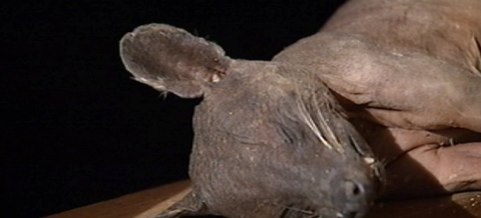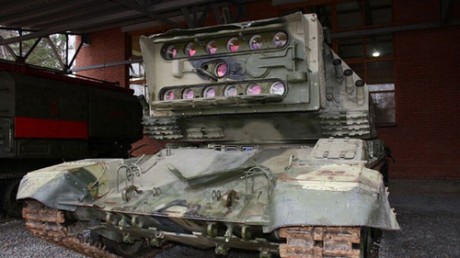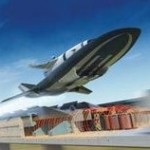Chupacabra Murdered In Kentucky?
Posted by Justin on December 28th, 2010
It might be a fake chupacabra but it definitely got real murdered on a front lawn in Kentucky.
[Fox News]

It might be a fake chupacabra but it definitely got real murdered on a front lawn in Kentucky.
[Fox News]
In Kentucky, being unidentifiable and having no fur in winter can be a deadly combination.
Mark Cothren shot and killed an animal on Dec. 18 because he said he feared what it was, since he did not recognize it. He said the animal walked from the woods onto his front yard around 3 p.m. Cothren lives on Mount Carmel Church Road in Lebanon Junction.
“I was like: ‘every animal has hair, especially this time of year!’ What puzzled me is how something like that could survive through a winter with no hair,” Cothren said.
[wave3]
India’s space agency experienced its second launch failure of the year when a rocket carrying a communication satellite exploded shortly after takeoff.
Yashpal, a retired Indian scientist and independent commentator, said he was very disappointed by Saturday’s failure, but other countries too have experienced such problems.
“I hope it’s just one of those things,” Yashpal, who uses one name, told reporters.
Manned spaceflight is planned for 2016.
[MSNBC]

Andrew heroically plots how he can rid the world of all life to spite a master race of alien invaders. The team learns a new ghost hunting technique in the ‘don’t ask, don’t tell’ graveyard and Spiro & The Fudge return to solve a case involving a mysterious stranger, a fully cooked steak and acres of unknowable wilderness.
Subscribe to the Weird Things podcast on iTunes
Podcast RSS feed
Episode archive
Download url: http://www.itricks.com/upload/WeirdThings122310.mp3
[podcast]http://www.itricks.com/upload/WeirdThings122310.mp3[/podcast]
Sponsored by:
Purchased ALL SPOTS to give you an uninterrupted episode.
Episode notes:
• Michael Crichton: States of Fear – Science or Politics
• Bjørn Lomborg, The Skeptical Environmentalist
Recomendations:
Andrew:
Pitch Black
The Keep
Brian:
Moon
Donnie Darko
Being John Malkovich
Justin:
The Imaginarium of Doctor Parnassus

New evidence suggests that female chimps in the wild copulate more often with males who share their meat with them on a regular basis. This validates a long held belief that the “meat-for-sex” trade is a key building block in both chimpanzee and early human hunter-gatherer societies.
We are sure there is a Christmas parable in here somewhere. Thanks to WT reader Dan Wheeler for sending this along.
Want to visit the real or imagined past and future without having a pack of wild Lybians trying to shoot you with a GD bazooka? Scientists have found evidence that you can travel through time where you comically meets a horny, teenage version of your mom using only your brain:
Researchers have found evidence for “chronesthesia,” which is the brain’s ability to be aware of the past and future, and to mentally travel in subjective time. They found that activity in different brain regions is related to chronesthetic states when a person thinks about the same content during the past, present, or future.
Heavy, Doc.
New Zealand’s military has released hundreds of documents from 1952-2009 containing drawings of UFOs and also supposed to contain examples of alien writing.
They are all online ready for you to examine.
[BBC]
Finally, we can protect the planet while fleeing it. A team of Swedish scientists discovered a new molecule that could increase the power of rocket fuel 20% to 30% while leaving less of a carbon footprint.

A new finger bone fossil in Southern Siberia belonged to a young lady of an unknown human ancestor. She ain’t Neanderthal and she ain’t early human.
Yes, this means we have to set an extra place at Christmas dinner. No, you don’t have to get her a present. Maybe a nice ring.
 The Soviet 1K17 laser tank used 66-pound synthetic ruby rods to produce lasers designed for blinding pilots and enemy weapons systems. It doesn’t melt incoming missiles, but still, laser tank!
The Soviet 1K17 laser tank used 66-pound synthetic ruby rods to produce lasers designed for blinding pilots and enemy weapons systems. It doesn’t melt incoming missiles, but still, laser tank!
[Gizmodo]
The Democratic Republic of Congo (not to be confused with the Republic of Congo immediately to the west…. Seriously) has a surprisingly rich history of space programs and rocket launches.
The story first begins back when the DRC was known as Zaire back in the late 1970s. A German company by the name of Orbital Transport und Raketn Aktiengesellschaft (OTRAG) decided to set up a rocket testing and launch facility in the Shaba Province of Zaire and signed an agreement with the government in 1976. To sweeten the deal, Zaire would be given one experimental satellite and a reduced rate for any future rocket launches. Logistical reasons that Zaire was chosen were the low population density near the launch site and because it was near the equator where rockets are just a tad easier to put into orbit.
However, the main reason why OTRAG didn’t set up in West Germany was a combination of two factors. The first factor was the United Nations Outer Space Treaty of 1967 which states that all rockets fired in international air space must be flagged from the country of origin. This directly conflicted with the 1954 Treaty of Brussels which, in part, prohibits the production of long-range or guided missiles on German territory. Zaire had no issue with providing the rockets with a Zaire flag and they placed no restrictions on OTRAG for missile development.
Rockets were launched beginning in 1977 with both successful launches and failures. However, due to intense pressure from the Soviet Union and France, two countries none too pleased with German rocket advancement, Zaire closed the program down in 1979. The video below is one of the failures.
More after the jump!
 NASA engineers have proposed a system comprised of a two-mile-long rail gun and a scramjet to launch a spacecraft into orbit. The rail gun would have a 240,000- horsepower motor that would convert 180 megawatts into enough force to accelerate the scramjet down the rail gun to Mach 1.5 in under 60 seconds. The scramjet would then launch from the track carrying the payload. Once it hit 200,000 feet at Mach 10 the spacecraft would separate from the scramjet and fire its rockets into orbit.
NASA engineers have proposed a system comprised of a two-mile-long rail gun and a scramjet to launch a spacecraft into orbit. The rail gun would have a 240,000- horsepower motor that would convert 180 megawatts into enough force to accelerate the scramjet down the rail gun to Mach 1.5 in under 60 seconds. The scramjet would then launch from the track carrying the payload. Once it hit 200,000 feet at Mach 10 the spacecraft would separate from the scramjet and fire its rockets into orbit.
The system calls for a two-mile-long rail gun that will launch a scramjet, which will then fly to 200,000 feet. The scramjet will then fire a payload into orbit and return to Earth. The process is more complex than a rocket launch, but engineers say it’s also more flexible. With it, NASA could orbit a 10,000-pound satellite one day and send a manned ship toward the moon the next, on a fraction of the propellant used by today’s rockets.
[Gizmodo]
Calvino Inman weeps blood. TLC is airing a documentary this month called The Boy With Bloody Tears about Calvino and this medical mystery.

We complete the epic adventure of Spiro & The Fudge when our law enforcement tandem attempts to utilize their keen detective skills and uncomfortably close relationship in solving a murderous mystery in mob-controlled Italy. Brian tries to outsmart a pack of wild pandas, and fails. Andrew recommends a new complimentary IKEA service: severed animal heads.
Subscribe to the Weird Things podcast on iTunes
Podcast RSS feed
Episode archive
Download url: http://www.itricks.com/upload/WeirdThings120910PART2.mp3
[podcast]http://www.itricks.com/upload/WeirdThings120910PART2.mp3[/podcast]
Sponsored by: